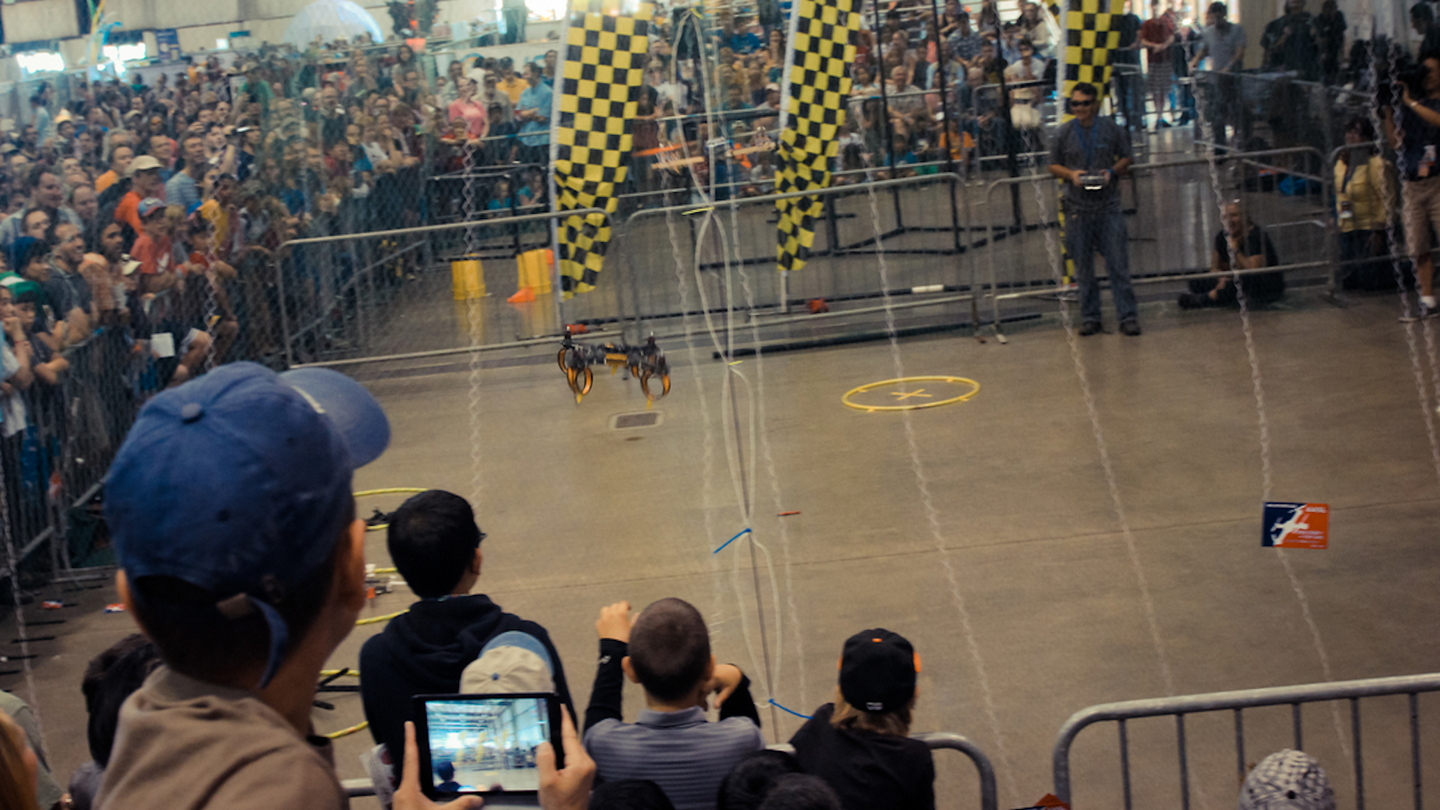Aerial Sports League’s ‘Game of Drones’ Could Be Downed By Legislation
The drone combat events are in jeopardy by a California Senate Bill.

For those of us old enough to remember “BattleBots” on a machine called a “television,” the following might seem simultaneously obvious and highly intriguing. Two teams, each with a drone in its corner, face off in what PopularScience calls “Game of Drones.” The unmanned aerial vehicles (UAVs) are weaponized, and only the last machine standing (or, rather, flying) is declared victorious. Sounds pretty cool, right? Well, unfortunately, it seems that this battle of the drones is coming under fire by Senate Bill 347 of the new sport’s home state of California—and could prematurely kill the sport before it, er, takes off.
The Aerial Sports League has been organizing drone-related events like racing and drone battles since 2011, hosting teaching sessions and corporate gigs, thereby spurring the youth to partake in this niche, science- and math-related sport. According to Marque Cornblatt, CEO of the League, there have been over 600,000 audience members at their Maker Faire hub in the Bay Area since the League’s founding six years ago. That’s quite impressive, and connotes not only a strong demand for drone combat, but the potential to lure kids into science, math, and engineering without them even realizing it. Cornblatt says, “What we found is that drone violence is actually a way to trick kids into their interest in the science and tech.” It's unfortunate, then, to see this fertile ground for potential future engineers being threatened by a single line in the aforementioned legislation: “A person shall not weaponize a remote piloted aircraft or operate a weaponized remote piloted aircraft.”
The game is simple: A 30 x 30 x 30-foot area is cordoned off with basic netting. This mitigates any potential risk to spectators, who can comfortably view the battle through said netting. As for the weaponized aspect, Cornblatt says they “don’t allow things like chemicals, fire, or electrical discharges. We don’t allow projectiles that can work their way through the net, so you can’t shoot paintball or airsoft guns or anything like that. But you can do like a net launcher, which is quite popular. You can have sort of ropes dangling below the drone, or objects sticking out to probe at the other drone with like a long stick.” Have a look for yourself below, courtesy of the Aerial Sports League.

Seems pretty cool, right? Well, we think so too, and hope that the Aerial Sports League finds a way to maneuver through this drone combat-threatening legislation. Besides strangling innovative ideas like this from being birthed into the freshly birthed hobby-drone industry and its variety of events, the main loss here really is the removal of inspiration for the kids. We've reported on similar events, such as the Drone Racing League's Championship races, and understand the value in empowering these foundations of inspiration for younger enthusiasts.
Cornblatt says, “When you set drones down in front of those kids and say, ‘If you learn our lesson, you’ll be flying drones here today,’ they’re super enthusiastic, extremely well behaved,” adding, “When you smash these toys together, you’re forced to learn about all kinds of things: electronics, hardware, little bit of software, teamwork. Kids embrace the challenges and the disciplines at the heart of making a drone fly and keeping it up in the air.” According to PopularScience, the lessons taught at Maker Faire are small, but inspiring, with up to 12 students per course. During the actual battles, the duel doesn’t end when a drone is downed - each pilot has 90 seconds to get in there, fix their UAV, and get it back in the air. Think of it like a Formula 1 pit-stop. According to Cornblatt, “We found that the engineering is equally as compelling as the combat.”
Hopefully, this doesn’t get nixed. Apparently Cornblatt is in talks with a TV network, which could be the deal to put this thing over the top and take it from the Bay Area to the world. Cornblatt’s frustrations are understandable, especially after fostering such a large community of enthusiasts. “As currently written, the bill neither defines 'weaponize' or provide exceptions for hobbyist combat drones that pose no threat to person or property outside a gaming context.” He adds, “When it comes to both combat as well as the educational aspects of what we’re going, the notion that we would somehow become criminalized for these activities, it just seems ludicrous. We’ve been doing this for years, no one’s ever gotten seriously hurt. And to me that comes out that all this drone violence is actually quite safe.”
